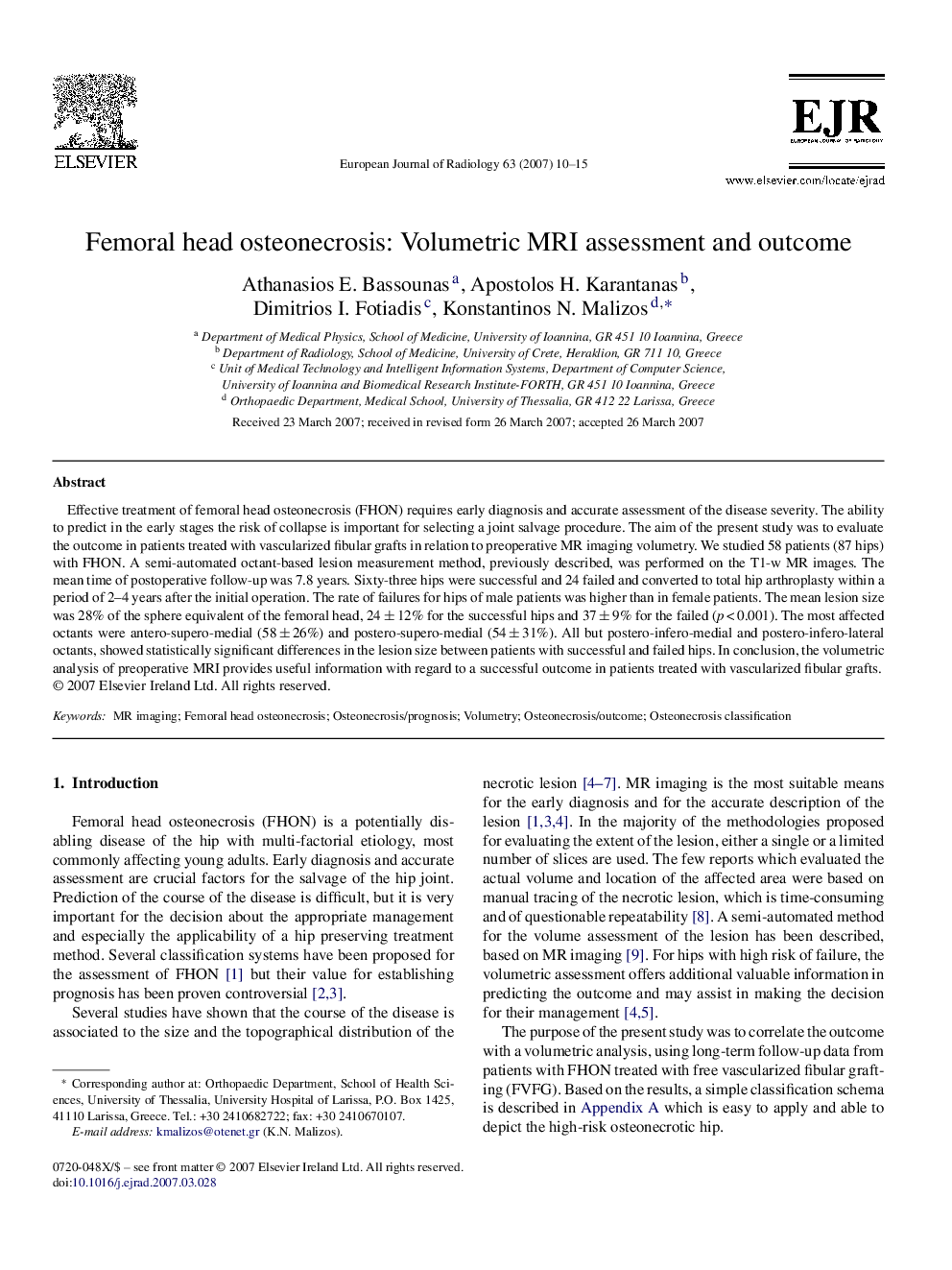| Article ID | Journal | Published Year | Pages | File Type |
|---|---|---|---|---|
| 4228364 | European Journal of Radiology | 2007 | 6 Pages |
Effective treatment of femoral head osteonecrosis (FHON) requires early diagnosis and accurate assessment of the disease severity. The ability to predict in the early stages the risk of collapse is important for selecting a joint salvage procedure. The aim of the present study was to evaluate the outcome in patients treated with vascularized fibular grafts in relation to preoperative MR imaging volumetry. We studied 58 patients (87 hips) with FHON. A semi-automated octant-based lesion measurement method, previously described, was performed on the T1-w MR images. The mean time of postoperative follow-up was 7.8 years. Sixty-three hips were successful and 24 failed and converted to total hip arthroplasty within a period of 2–4 years after the initial operation. The rate of failures for hips of male patients was higher than in female patients. The mean lesion size was 28% of the sphere equivalent of the femoral head, 24 ± 12% for the successful hips and 37 ± 9% for the failed (p < 0.001). The most affected octants were antero-supero-medial (58 ± 26%) and postero-supero-medial (54 ± 31%). All but postero-infero-medial and postero-infero-lateral octants, showed statistically significant differences in the lesion size between patients with successful and failed hips. In conclusion, the volumetric analysis of preoperative MRI provides useful information with regard to a successful outcome in patients treated with vascularized fibular grafts.
